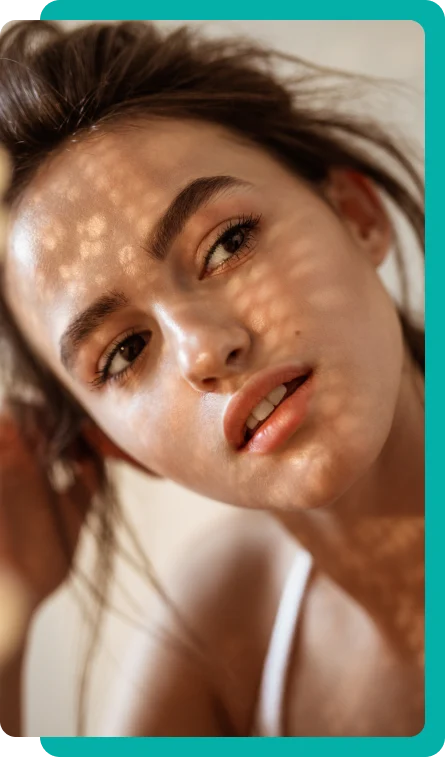For Patients
About
For Providers
Locations
Blog
Contact
Menu
Whether you’re smiling, talking, or pouting, a groove forms on your skin whenever you move any of your facial muscles. Nasolabial folds, also known as smile lines or laugh lines, are the big parenthesis of skin that arc downward from either side of the nose toward the corners of your mouth. To fill in those happy-face grooves, you will need nasolabial dermal fillers. While fillers are non-invasive, swelling is a minor side effect that’s entirely normal and expected.
So how long does swelling last after receiving nasolabial fold filler? Swelling will usually reach its peak around 24 to 72 hours after your procedure, and afterward, it should gradually subside. Fortunately, there are some tried and true ways to reduce post-treatment swelling in your face so that you can get back to regular programming as soon as possible.
If you’ve never had dermal fillers before, you might be concerned with post-treatment swelling. Don’t worry – swelling, along with bruising, is completely normal. Whether you’re treated with Juvederm Voluma, Restylane Lyft, Belotero Balance, or the like, you should anticipate a certain degree of swelling that may last a few hours or up to 3 days, possibly longer, depending on a multitude of factors.
Certain herbal supplements and medications are known to exacerbate swelling. That’s why when you receive your injectable filler, avoid medications like ibuprofen, aspirin, naproxen, as well as supplements including flaxseed oil, turmeric, ginger, vitamin E, cinnamon, and CoQ10. If you were prescribed to take these on a daily basis, inform your injector so that they can determine the best treatment plan for you.
Taking Arnica supplements 3 days after the appointment is actually recommended for dermal filler patients to reduce swelling and bruising. Arnica, an over-the-counter natural supplement, stimulates circulation and wakes up the body’s healing system.
Hydration can minimize swelling and extend the longevity of your injectables, especially hyaluronic acid filler (HA). So make sure to drink lots of fluid, such as water and juices, to maintain your hydration. Aim for at least 8 glasses of water a day.
Also, abstain from alcohol of any kind – including beer, wine, and liquor – for at least 24 hours after your dermal filler appointment. Alcohol thins the blood and thus increases the risk of swelling.
While applying pressure on the injection site is usually not recommended, gently applying ice intermittently can reduce any swelling that naturally appears. Just make sure to wrap the ice cube in a cloth, so that you don’t put the ice-cold surface directly onto the treated area.
Bedrest can do wonders for minor post-injection swelling. Prop up your head with an extra pillow to make sure that the newly-injected filler stays in place. You should also sleep on your back for at least 1 week after your treatment.
An increased heart rate can cause your treated area to swell, which is why you should avoid vigorous activity at least 2 days after your dermal filler treatment. Say, for instance, swimming could increase your risk of infection as bacteria could enter the injection site. But remember that a walk in the park should be fine. Just don’t do activities that make you go out of puff or add pressure to the face (e.g., snorkeling, Crossfit, yoga inversions).
Lastly, apart from the treatment itself, there are other factors at play when it comes to post-treatment swelling. These include allergies, hormones, medical conditions, and the like. As such, always tell your plastic surgeon about your health condition so that they can determine the appropriate methods to help reduce swelling.
Before we dive into the science, it’s crucial to understand that although swelling is a potential side effect for dermal fillers, it is not permanent nor should it be cause for serious concern. Similar to plastic surgery, the dermal filler injection process involves a needle that creates micro-cuts into your skin, causing minor trauma.
Temporary swelling indicates that the filler has safely and effectively triggered your body’s natural response to help heal the injection site. Just like the aftermath of injuries, cosmetic procedures, and tattoos, you will need to wait for the swelling to subside since you either introduced a new substance into your body or damaged a particular area. So just let your body do its thing.
Keep in mind that the real work is done by the active ingredients of the filler. It takes a while for these to break down and integrate themselves into your skin’s infrastructure. Also, the more severe the swelling, the longer it lasts; however, your skin should return to its new normal in about a week or so. By following a pre and post-care regimen, you can significantly reduce the time it takes for the treated area to heal.
The facial areas that are less likely to experience swelling would be the chin, temples, and cheeks because dermal fillers are usually placed deeper inside, so the swelling is somewhat hidden and less pronounced. On the contrary, a lip filler is more likely to cause swelling because lip tissues are fairly delicate.

Over time, the body metabolizes the naturally occurring enzymes found in dermal fillers. And so while fillers may not last forever, we’ll fill you in on the many ways you can extend their lifespan and make the most out of their results:
The best way to increase the longevity of your cosmetic injections is by timing your treatment. Give your body time to recover and get in the groove of the following new habits. Don’t schedule an appointment the day before your wedding!
The sun’s ultraviolet (UV) rays accelerate the breakdown rate of the active ingredients in your fillers. Either you stay out of the sun or use high-quality sunscreen whenever you’re outdoors. Wear a wide-brimmed hat and a pair of glasses as much as possible.
Give your facial filler treatment a helping hand by incorporating anti-aging products into your skincare routine. Use products that not only improve your skin’s tone and texture but also complement the type of filler that you have.
Stress, believe it or not, wreaks havoc on your body in more ways than you can imagine. May it be issued with your career, relationships, family, or finances, stress triggers prompt the release of cortisol (the stress hormone) which speeds up the aging process. To remedy this, we suggest that you engage in de-stressing activities (e.g., meditation and yoga) regularly.
Maintenance is critical. With Restylane Defyne, Restylane Refyne, Revanesse Versa, Juvederm treatment, and the like as your HA filler options, LC Medical Aesthetics will find the filler type that can fulfill your aesthetic goals. But in order for you to maintain your desired results, you should schedule a touch-up session every 6 to 12 months, depending on the type of filler used.
Laugh lines are no laughing matter if you’re staring at yourself in the mirror and nitpicking the areas that have descended and shifted with time. Even though these nasolabial folds are a natural part of the aging process, certain lifestyle factors can make them worse:

At Dr. Lanna Aesthetics, we can make your cosmetic goals come true by offering dermal fillers for different facial areas – nasolabial folds, severe facial wrinkles, loss of cheek volume, and the like. We will understand your medical history, and your medications, and equally importantly, answer all your questions and give professional advice. For a full consultation on the best dermal fillers for you, get in touch with us today.

Join Dr. Lanna & Dr. Doshi for a Transformation
Unlock the possibilities with our certified facial and oculofacial plastic surgeries. Attend our free webinar to find out how we can tailor solutions for you, with financing available to fit your budget.
